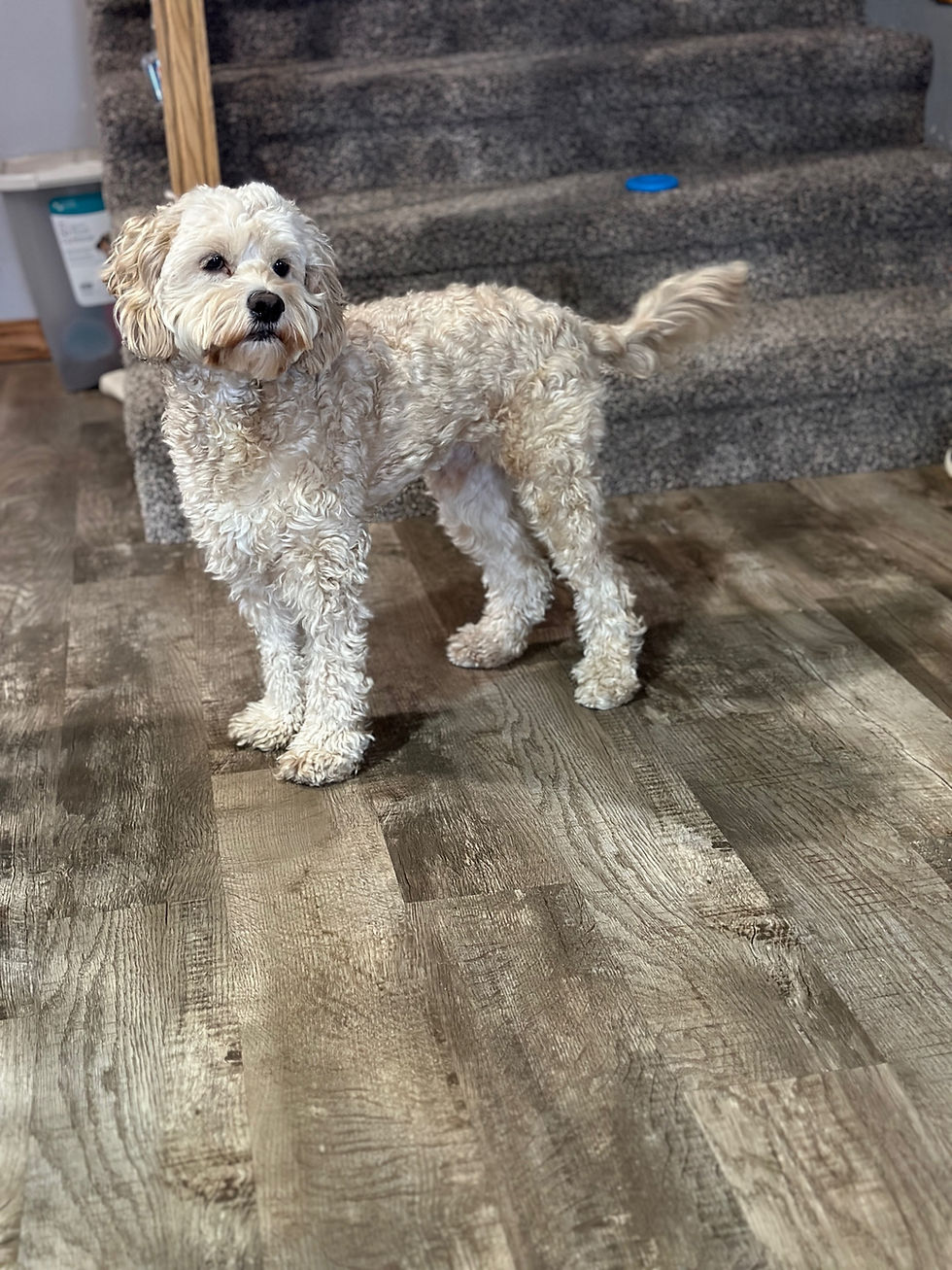"Understanding Dog Body Language: What Your Dog is Trying to Tell You"
- Foglesong Spring Creek's Puppies

- Dec 4, 2023
- 3 min read
Dogs communicate a lot through their body language, and we need to understand what they're trying to tell us.
Decoding Doggy Signals

Have you ever wondered what your dog is trying to tell you with those wagging tails and perked ears? Dogs have fascinating ways of communicating, and deciphering their body language can give us incredible insights into their thoughts and emotions. We will dive into decoding those subtle signals and helping you understand your four-legged companion on a whole new level. Get ready to unlock the secrets of doggy body language!
Before listing your tips below, add one last sentence that sums up your paragraph or offers a smooth transition to your listicle.
Tip #1 - Pay Attention to Tail Waggin
A dog's tail can be a powerful indicator of their emotions. While a wagging tail is often associated with happiness, it's essential to look beyond the wag. The position, speed, and height of the tail can result in different messages. For example, a relaxed, loose wag usually means they are happy and friendly, while a stiff wagging tail might indicate alertness and potential aggression towards something. The height of the tail can provide more insights. A tail that is kept held high can often indicate confidence or dominance, while a tail tucked low or between legs can be a sign of fear or submission like they are scared or in trouble. By taking in observation of the dog's tail wagging you can better understand your dog's mood and respond accordingly.
Tip #2 - Watch their Ears, Eyes & Howling."
Eyes, Ears, & vocalizations can play a part in understanding your mood just as much as their tail. Like humans, dogs use their eyes to express emotions. Dilated pupils may indicate excitement or fear, while a direct, intense stare can be seen as a sign of dominance or aggression. Pay close attention to their ears and the position of the ears, if they are forward-facing that indicates alertness and interest. If they are backward-facing ears can signal fear or submission. Now Vocalizations, pay attention to the barks, growls, whines, and howls as they can all mean something very different. If your dog gives off a short, sharp bark that can mean they are alert and aware of something happening, that is their way of saying "Hey, something's going on!" Then you have a deep, low continuous bark and growl usually indicates a warning signal that there is a potential threat.
"Dogs do speak, but only to those who know how to listen."-Orthan Pamuk
Tip #3 - Make it personal
I noticed my dog Sven was acting a bit anxious and restless. His tail was tucked between his legs, and his ears were pinned back. I knew something was bothering him, but I wasn't sure what it was. I had just put up all my Christmas decorations early that day but didn't think much about it. I decided to further investigate what was bothering him. So I sat down next to him and started slowly in a soft voice petting him and talking to him. I noticed he would slightly start to wag his tail then he would immediately put it back down. He acted scared but I didn't know what it was. Then I got up and started walking around the room and watching him as I did. When I got to my 6-foot-tall Grinch Statue I noticed his behavior got a little worse. I suddenly knew he was scared of the Grinch Statue. So I calmly grabbed a toy from his toy bin and tried to get his attention off the Grinch Statue. Once I was able to get him to play I noticed his demeanor and changed. So that is when I slowly took him towards the statue and he changed his body language again but after doing this over sometimes he began to realize the Grinch Statue wasn't going to hurt him. This made me realize the importance of understanding your dog's body language and using it as a way to communicate and teach my dog.
Tip #4 - The Eyes, Ears, and Tail Tell All!
Pay close attention to these areas to understand your dog's emotions and needs. Happy tails, relaxed ears, and soft-focused eyes usually mean they're content, while tucked tails, pinned ears, or wide, dilated eyes might indicate fear or anxiety. Trust your instincts and observe their body language to strengthen your bond with your dog.
Remember to be patient and observant, and always respond with love and care. Your dog will appreciate the effort, and your bond will grow even stronger.

Comments